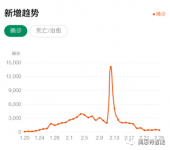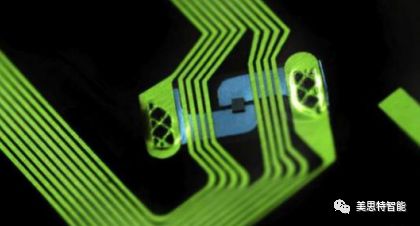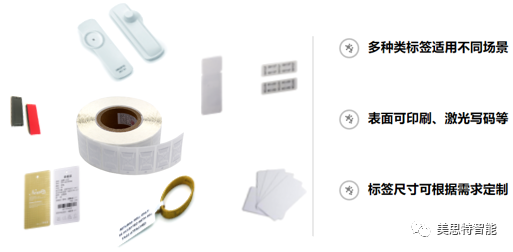
Multi-dimensional prevention and control of the epidemic, RFID is here to fight
[ad_1]
As of 24:00 on February 25, a total of 77,789 confirmed cases have been reported across the country, a total of 2,666 deaths, a total of 27,836 cured and discharged, and 2824 suspected cases. Since February 3, the national epidemic situation has been on a downward trend, which is sufficient to show that the measures taken in the earlier period to extend the Spring Festival holiday, shift peak returns, and strengthen management and control are effective. The next step will continue to follow the central decision and deployment, and continue to strengthen the epidemic in a targeted manner. Prevention and control work.

Except for areas with severe epidemics, most cities have launched plans to resume work, and epidemic prevention and control work will follow. In terms of vaccine research and development, multiple routes are deployed in parallel to advance research and development, and it is expected that the fastest vaccine will be submitted for clinical trials around late April. Before the epidemic is completely cleared, the prevention and control of the epidemic is particularly important for such a large number of resumption of work.

In the face of mass resumption of work, a large number of people will return to first-tier cities such as North, Shanghai, Guangzhou, and Shenzhen. Office prevention and control will follow community prevention and control, becoming the focus of the next phase of epidemic prevention and control, and reducing “contact transmission” will become the core of the next epidemic prevention. ‘Non-contact’ became a hot topic for a while. To solve the relationship between people and things, or even between things and things, the Internet of Things is the best choice.
RFID contactless attendance-free your hands
The first hurdle to enter the office is to check in. If you don’t pay attention, your hands may encounter secondary pollution. As the country enters a critical period of epidemic prevention and control, the RFID attendance system can better protect the life and work safety of medical staff in places where the public is in high-frequency contact. The RFID time attendance system adopts one person, one card, one code. It does not deliberately touch the card swiping device, let alone identify fingerprints. Just hang the card around your neck or put it in your arm pocket to complete the attendance, which can completely free your hands to do more things. . The recognition time of the RFID reader can be accurate to the millisecond level, and the recognition speed can reach 800 people/min, which can perfectly solve the phenomenon of crowded commuting. The recognition distance is farther than the fingerprint punching machine. Not only that, the attendance system can be connected to the hospital manpower management system, which is convenient for hospital management.

Place UHF RFID readers at the entrances of important work areas such as hospital offices, pharmacies, operating rooms, laboratory departments, pharmacies, etc. The unique RFID tags that medical staff carry when entering and leaving the area will be read and written by UHF RFID The device remotely automatically recognizes and uploads identity information and time of entry and exit to the back-end system. The back-end system has management functions such as records, alarms, queries, and information statistics. At the same time, it will accurately recommend disinfection time based on the circulation of public spaces and facilities. Assist managers in the hospital by real-time monitoring of personnel and timely control of the distribution of personnel to help medical staff reduce unnecessary working hours, and contact the personnel who need to be contacted at the first time to achieve the safe positioning of all medical staff in the hospital manage.

RFID medical material management-convenient and fast
The unmanned shops in the Huoshenshan Hospital built in 10 days, the unmanned vending machines distributed in major cities, the RFID temperature sensing tags in the hospitals, the use of VR/AR in factory intelligent manufacturing and unmanned logistics, etc., these Internet of Things The form of non-contact economic performance carried has already appeared in the public eye before the outbreak.

With the rapid development of RFID technology, RFID technology has also been used in the management of medical materials, especially in the aspects of inventory, storage and material management, and other aspects have begun to play a huge role. The penetrability and non-barrier nature of RFID electronic tags to read information, give each material a unique identification code, and labels with different properties can be selected according to the type of material, including self-adhesive labels, anti-metal labels, and anti-liquid labels And special high temperature and acid and alkali resistant labels. The administrator can read the RFID tags on the materials through the RFID inventory stick to realize the long-distance rapid inventory and warehouse management.

Labels are applied to objects, not people. After the epidemic, people will have some barriers to hygiene and personal contact, and objects should not be in contact with people as much as possible. RFID technology can just solve this problem, causing medical staff to waste time on complex inventory work. , Used in the race against time to treat diseases and save people.
Opportunities and challenges coexist. This epidemic has made everyone realize the importance of IoT technology, and only IoT technology is more suitable to solve current problems. With the intervention of RFID technology, the hospital personnel and material management system can collect and process information in a wireless, real-time, and long-distance reading manner, and can automatically identify targets, thereby realizing automated management of targets, improving hospital management efficiency, and ensuring medical care The safety of personnel, patients and materials reduces the loss of the hospital.
[ad_2]



